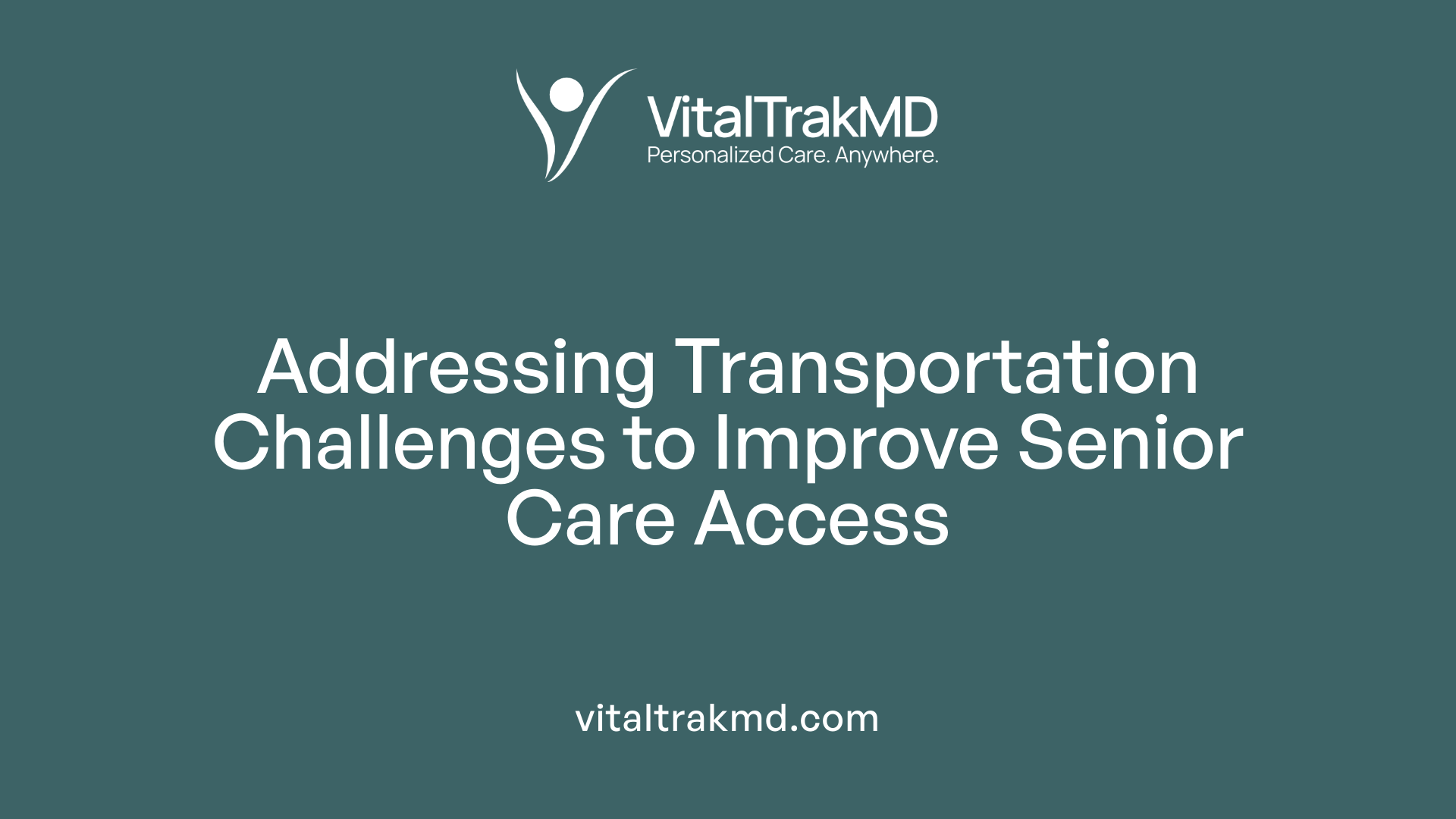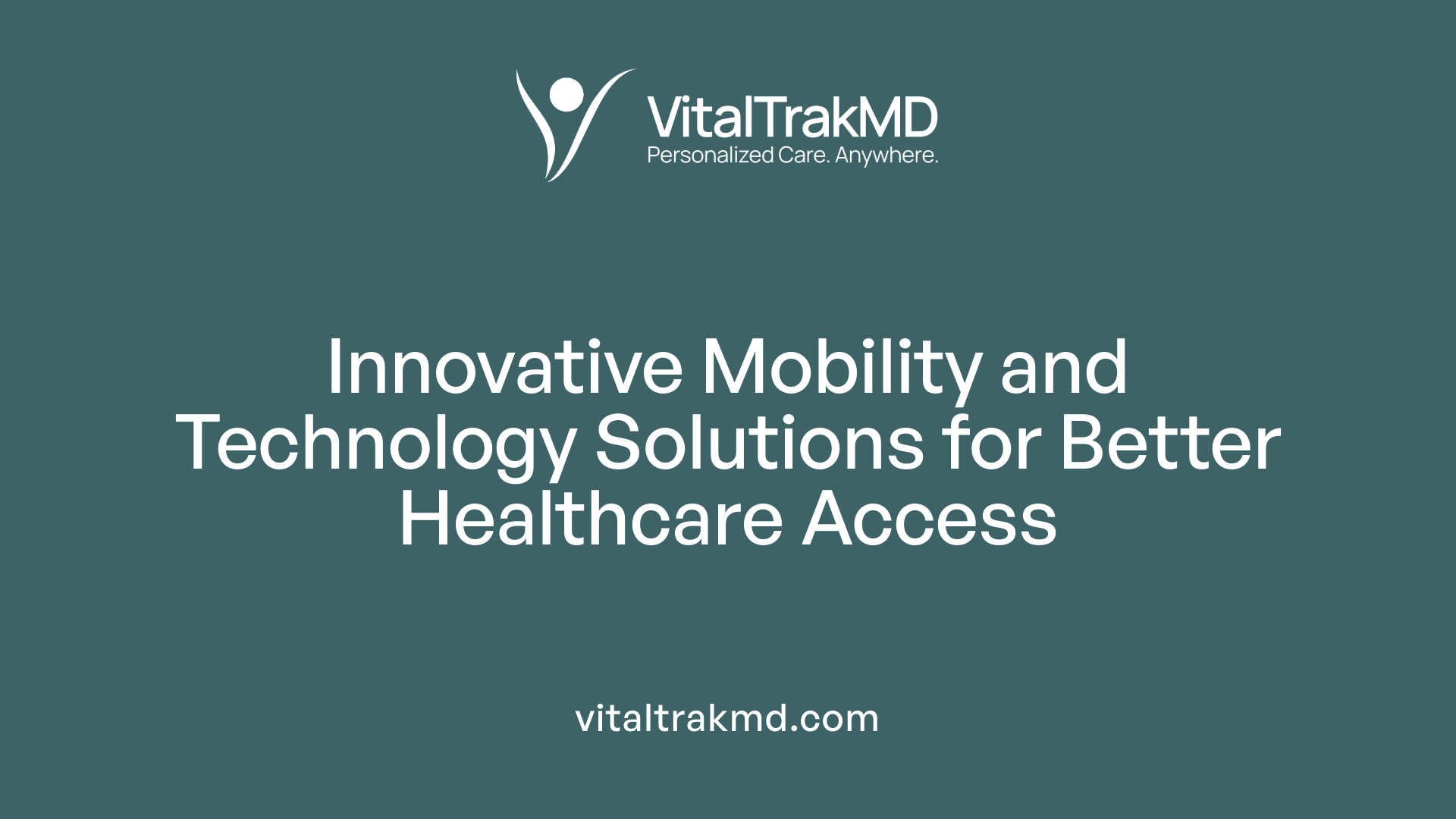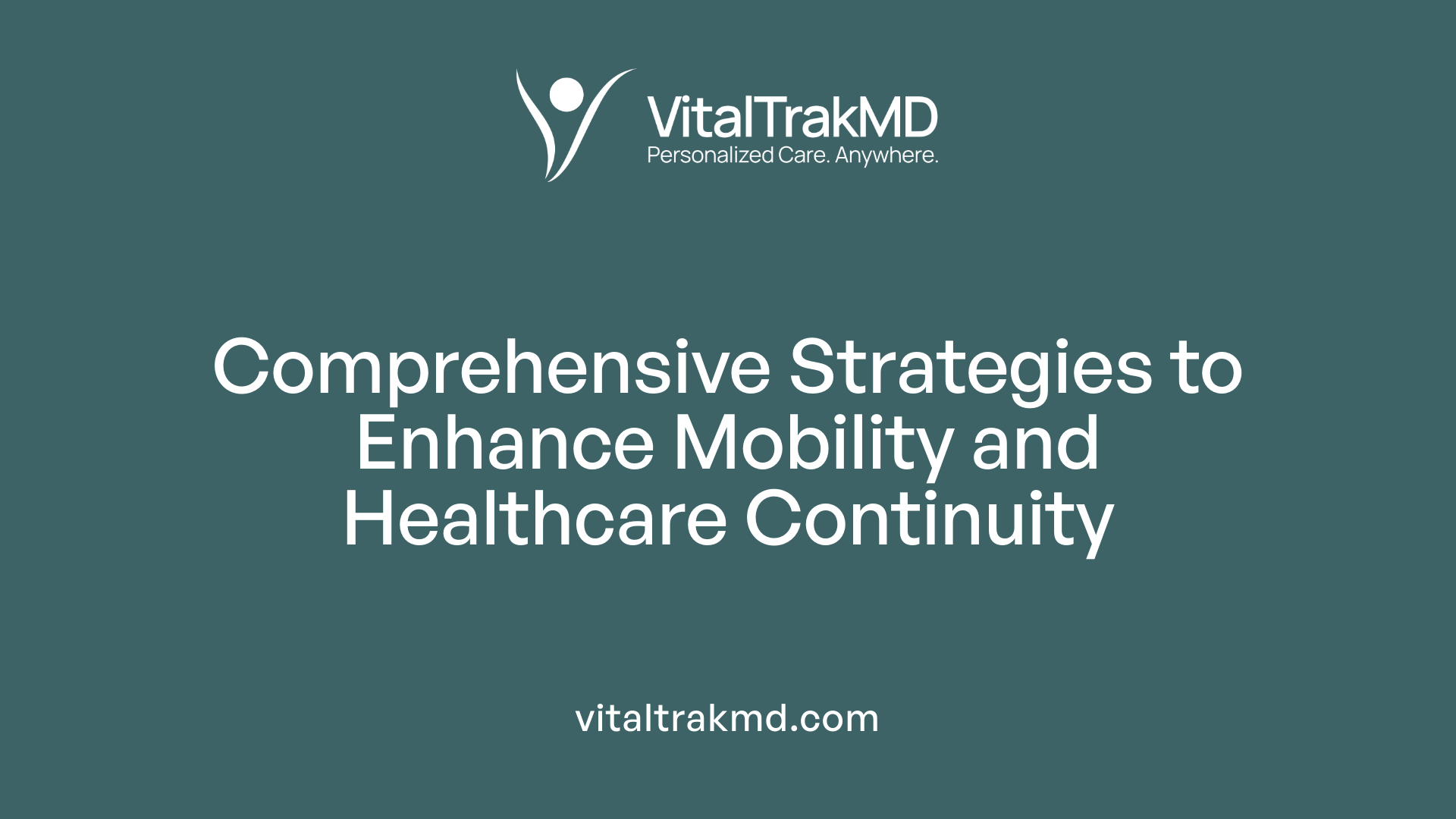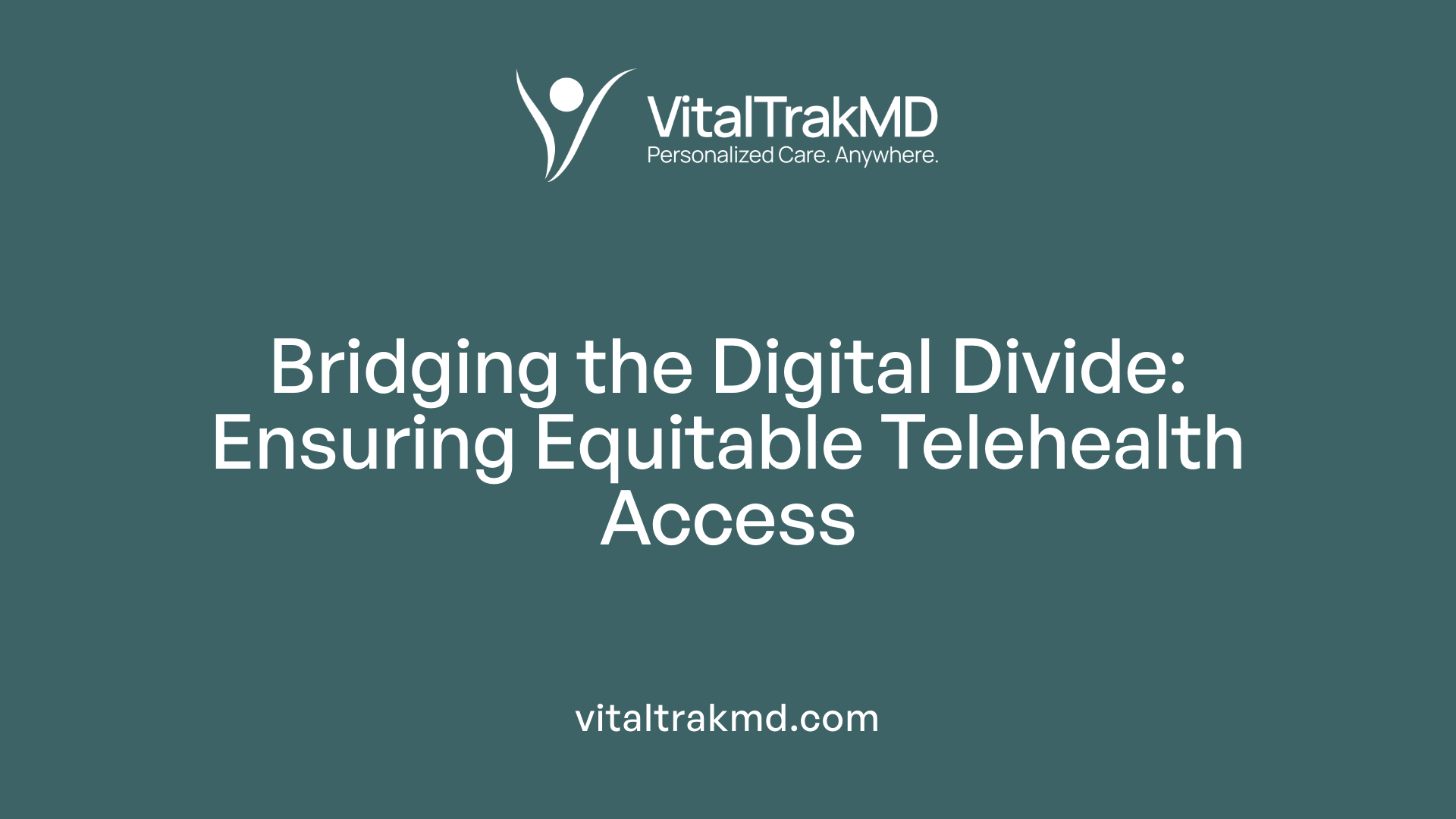How Hybrid Care Helps Seniors Overcome Transportation Barriers

Introduction: Addressing Transportation Challenges in Senior Healthcare
Transportation barriers remain a significant obstacle to healthcare access for seniors, especially those living in rural or underserved areas. These challenges can lead to missed appointments, delayed diagnoses, and poorer health outcomes. To combat these issues, hybrid care models—integrating telehealth with in-person visits—have emerged as effective solutions, expanding healthcare reach and promoting aging in place. This article explores how hybrid care models help seniors overcome transportation barriers, improve health outcomes, and ensure continuous, equitable access to healthcare.
Understanding the Scope of Transportation Barriers in Senior Care

What statistics highlight transportation barriers affecting seniors?
Transport challenges significantly impact seniors' ability to access healthcare. According to a 2017 report from the American Hospital Association, nearly four million people in the U.S. do not seek care annually due to unreliable or inaccessible transportation. Further studies show that up to 50% of patients report transportation as a major obstacle. These issues include not only a lack of personal vehicles but also living in areas with limited public transit options and long distances to healthcare facilities.
How do transportation challenges affect health outcomes?
Transportation barriers can lead to delayed or missed medical appointments, which negatively influence the management of chronic diseases and early detection of serious conditions. Patients may also struggle with adhering to prescribed medication, exercise routines, and other health regimens. For older adults, these issues often result in worsened health, higher hospital readmissions, and increased mortality. Especially for those with conditions like heart failure, missed appointments mean less monitoring and timely intervention.
What are the disparities between urban and rural populations?
Rural residents face tougher transportation obstacles due to greater distances from healthcare providers, fewer transit options, and limited infrastructure. These barriers are compounded for older adults with mobility issues or disabilities. In urban settings, while transportation may be more accessible, disparities still exist due to limited broadband internet and digital literacy, which hinder access to telehealth services.
Table: Comparing Transportation Barriers and Solutions in Senior Care
| Aspect | Urban Areas | Rural Areas | Potential Solutions |
|---|---|---|---|
| Main Barriers | Limited broadband, digital literacy issues | Distance to healthcare facilities, limited transit | Enhanced community transit, telehealth expansion |
| Impact on Care | Moderate access, some missed appointments | High risk of delayed care, missed treatments | Mobile clinics, flexible scheduling |
| Innovative Approaches | Ridesourcing apps, telehealth platforms | Paratransit partnerships, mobile health units | Subsidized transportation, integrated remote care |
Understanding these factors underscores the importance of tailored interventions to improve healthcare access for seniors in various settings. Combining technological advances like telehealth with transportation support can help bridge these gaps, enabling seniors to receive timely, continuous care.
The Evolution and Expansion of Telehealth, Especially During COVID-19

How effective was hybrid care during the COVID-19 pandemic in improving healthcare access for seniors?
Hybrid care, which combines in-person visits with virtual health consultations, proved to be highly effective during the COVID-19 pandemic in enhancing healthcare access for older adults. This approach mitigated exposure risks associated with in-person visits while ensuring continuity of essential health services.
With the rapid expansion of telehealth policies, many seniors could maintain regular contact with healthcare providers without leaving their homes. This was particularly important for managing chronic conditions like heart failure, diabetes, and cancer, where ongoing monitoring and specialist consultations are critical.
Studies have shown that hybrid care models resulted in shorter visit times and allowed for more comprehensive interventions. Patients reported high satisfaction, finding virtual consultations more convenient and less intimidating. For example, telehealth facilitated remote monitoring of physiological data, which improved disease management and health outcomes.
Despite challenges such as digital literacy and internet connectivity issues, support systems including caregiver assistance and community resources helped overcome these barriers. Overall, these hybrid models proved to be a vital strategy in maintaining and improving healthcare access and quality for seniors during the pandemic.
How did policy changes facilitate the rapid adoption of telehealth?
The COVID-19 pandemic prompted significant policy shifts that removed many prior restrictions on telehealth use. Agencies like Medicare expanded coverage, allowing more patients to access virtual care with reimbursement parity. Regulations related to licensure, privacy, and cross-state practice were temporarily eased, making telehealth more accessible.
These policy changes encouraged healthcare providers to adopt telehealth solutions promptly. As a result, innovations such as remote patient monitoring and virtual visits became mainstream components of healthcare delivery. The regulatory flexibility ensured that telehealth could be used not just for basic consultations but also for complex management of conditions, especially in vulnerable populations like seniors.
What are common telehealth applications for seniors?
Seniors have benefited from a variety of telehealth applications, including:
- Virtual primary and specialty care: allowing consultations without travel.
- Remote monitoring: continuous tracking of vital signs such as heart rate and blood glucose, which supports chronic disease management.
- Mental health services: providing counseling and therapy while reducing stigma and accessibility barriers.
- Post-hospitalization follow-up: ensuring recovery and reducing readmissions.
- Health education: delivery of tailored information and support, often integrated with platforms like UpToDate® Digital Architect.
These applications increase healthcare accessibility for seniors living in care deserts or rural areas, dramatically reducing transportation burdens. They also support better adherence to treatments and improve overall wellness.
Why is telehealth likely to remain a staple in senior care?
Given its demonstrated effectiveness, increased acceptance among patients and providers, and supportive policy environment, telehealth is poised to become an enduring part of healthcare, especially for older populations. This trend is reinforced by ongoing innovations in digital health tools and the recognition of transportation barriers' impact on health outcomes.
More than ever, telehealth’s role in providing flexible, patient-centered care is clear, ensuring that seniors in underserved areas receive the ongoing attention they need, directly from the comfort of their homes.
Leveraging Technology and Innovative Solutions to Overcome Transportation Barriers

How can hybrid care and innovative mobility services improve health outcomes for seniors?
Hybrid care models that combine in-person visits with telehealth follow-ups have transformed healthcare accessibility for seniors, especially those living in care deserts or rural areas. These models make it easier for older adults to receive consistent care without the burdens of frequent travel.
Transportation remains a significant hurdle for many seniors. Nearly four million Americans avoid needed healthcare annually due to transportation issues, with up to half of patients in some studies reporting this barrier. Long distances, poor public transit options, and mobility challenges often lead to missed appointments, delayed treatment, and worsening health conditions.
Innovative mobility services, such as ridesourcing platforms like Uber Health, are changing this landscape. Launched in 2018, Uber Health provides a HIPAA-compliant platform that allows healthcare providers to book rides for patients directly through integrated systems. Features like trip tracking and billing streamline the process, ensuring reliable transportation support for patients.
Partnerships between insurers and ridesourcing companies further enhance access. Blue Cross Blue Shield and Cigna-HealthSpring have collaborated with Lyft to offer rides for non-emergency medical trips. These efforts are especially crucial for seniors, individuals with disabilities, and those without reliable personal transportation.
Community-based solutions also play a vital role. Mobile clinics and flexible paratransit services subsidized by transit agencies provide on-demand transportation options tailored to patients' needs. These initiatives increase healthcare access, reduce missed visits, and support chronic disease management.
Looking ahead, integrating smart home technology, personal assistive devices, and autonomous vehicles may further empower older adults by promoting independence and safer mobility.
Combining hybrid care models with these innovative transportation options ensures that seniors not only receive quality healthcare but do so conveniently, promoting better health outcomes, active engagement, and improved quality of life.
| Solution Type | Description | Impact | Additional Notes |
|---|---|---|---|
| Ridesourcing Platforms | Uber Health and Lyft partnerships for scheduled, HIPAA-compliant rides | Reliable, private transportation ; Reduces missed appointments | Used by healthcare providers to facilitate patient trips |
| Community-based Transit | Mobile clinics and subsidized paratransit services | Increased access in underserved areas ; Supports mobility for disabilities | Often combined with telehealth for comprehensive care |
| Future Technologies | Smart home systems, autonomous vehicles | Enhanced independence; safer at-home mobility | Still emerging but promising for aging population |
In sum, leveraging technology and new mobility services addresses many traditional barriers faced by seniors, leading to more equitable, accessible, and effective healthcare delivery.
Strategies to Facilitate Transportation and Healthcare Access within Hybrid Models

What strategies within hybrid care models help seniors overcome transportation barriers?
In hybrid healthcare systems, combining virtual and in-person services provides an effective way to address transportation challenges faced by seniors. Telehealth enables patients to consult with healthcare providers remotely, significantly reducing the need to travel for routine appointments. This approach is especially valuable for older adults with mobility issues or those living in rural and underserved areas.
Complementing telehealth, community-based clinics and mobile health units bring essential services directly to neighborhoods, making healthcare more accessible. These solutions help bridge gaps in local healthcare infrastructure and provide timely care without long-distance travel.
Transportation assistance programs also play a vital role. Options include door-to-door transportation, volunteer driver services, and reimbursement initiatives that facilitate travel to necessary in-person visits. Such programs are essential for seniors who lack private transportation or cannot rely on public transit.
Healthcare care coordinators, like social workers and nurses, contribute by developing personalized plans that enhance transportation self-efficacy. They can help patients address mobility limitations, arrange transportation, or coordinate visits with local services.
Expanding healthcare infrastructure in vulnerable communities and integrating innovative solutions like home delivery of medications and lab services further reduce transportation barriers. These strategies, when combined, promote continuous, equitable healthcare access for seniors.
Overall, a multi-faceted approach—leveraging technology, community resources, and personalized support—ensures that older adults benefit from reliable healthcare access despite transportation limitations.
Impact of Hybrid Care on Managing Chronic Diseases and Preventive Care

How do hybrid care models help seniors overcome transportation barriers to ensure continuity of care and potential cost savings?
Hybrid care models, which combine in-person visits with virtual care, offer significant advantages for seniors facing transportation challenges. For many older adults, traveling long distances to healthcare facilities can be daunting due to mobility issues, lack of accessible transportation, or limited public transit options in rural and underserved urban areas.
By integrating telehealth services, seniors can consult healthcare providers remotely for routine follow-ups, symptom checks, and medication management, reducing the need for frequent travel. Additionally, community-based solutions such as mobile clinics and local care points, combined with subsidized shuttle or rideshare programs—including partnerships with ride-hailing companies like Uber and Lyft—facilitate access to necessary in-person services when more comprehensive evaluations or procedures are needed.
These transportation enhancements not only cut down on missed appointments but also prevent emergency visits stemming from neglected health issues. Evidence shows that decreasing no-shows and late arrivals translates into significant financial savings for healthcare systems, as fewer hospitalizations and complications occur. Reliable transportation also promotes social participation, access to social services, and resource utilization, supporting mental and physical well-being.
Ultimately, hybrid care models foster continuous, equitable healthcare delivery. They address transportation barriers directly, ensuring that seniors, especially those with chronic conditions like heart failure or diabetes, maintain consistent care routines. This approach results in better disease outcomes, improved quality of life, and reduced healthcare costs.
| Benefit Area | Impact | Additional Details |
|---|---|---|
| Continuity of Care | Ensures regular check-ins and timely interventions | Virtual follow-ups supplement in-person visits |
| Cost Savings | Reduces avoidable hospitalizations and emergency care | Lower expenses through fewer missed appointments |
| Social Participation | Supports mental health and social engagement | Free and subsidized transportation options |
| Equity Enhancement | Meets needs of socioeconomically disadvantaged seniors | Combines tech solutions with community programs |
The integration of innovative transportation solutions within hybrid care not only optimizes healthcare delivery but also promotes social equity and economic efficiency—making it a sustainable approach to managing chronic diseases and preventive care for seniors.
Implementing Telehealth and Hybrid Care Effectively for Seniors

How can patient engagement and education improve telehealth success for seniors?
Engaging seniors in telehealth begins with tailored education that enhances their understanding of digital tools and comfort with virtual visits. Clear instructions, simple interfaces, and ongoing support help seniors navigate technology confidently. Healthcare providers can offer tutorials, step-by-step guides, and tech support to reduce confusion and anxiety.
Additionally, involving family members or caregivers in the education process can reinforce confidence and assist with technology use. Providing accessible educational content, such as videos or brochures designed for older adults, encourages active participation.
Implementing these educational strategies increases familiarity with telehealth platforms, promotes adherence to treatment plans, and enhances overall satisfaction with virtual care.
What strategies within hybrid care models help seniors overcome transportation barriers?
Hybrid care models combine in-person visits with telehealth follow-ups, helping seniors manage transportation hurdles effectively. Key strategies include:
- Offering telehealth options for routine follow-ups, reducing the need to travel.
- Establishing local community clinics or mobile health units that bring services closer to patients, especially in rural or underserved areas.
- Providing transportation assistance such as door-to-door services or transportation reimbursement programs.
- Engaging care coordinators—like social workers or nurses—to develop personalized plans that address mobility challenges.
- Expanding healthcare infrastructure and utilizing innovations like home medication delivery services.
By integrating these approaches, health systems can ensure seniors receive continuous, comprehensive care despite transportation limitations.
More Information
| Strategy | Description | Additional Details |
|---|---|---|
| Telehealth Education | Training and support for seniors to use digital tools | Tutorials, caregiver involvement, accessible content |
| Local Community Clinics and Mobile Units | Bringing care directly to underserved areas | Reduces travel burden, increases accessibility |
| Transportation Assistance Programs | Support for traveling to in-person appointments | Reimbursement, door-to-door services |
| Care Coordination | Personalized plans to address mobility issues | Involves social workers and nurses |
| Home Delivery Services | Medication and supplies delivered to homes | Ensures continuous treatment without travel |
Adapting healthcare delivery through these strategies can significantly improve access and health outcomes for seniors, especially those in areas with limited transportation options.
Enhancing Medicare and Policy Support for Remote and Hybrid Care
 During the COVID-19 pandemic, hybrid care models—combining in-person visits with virtual consultations—proved instrumental in improving healthcare access for seniors. The adoption of telehealth allowed older adults to receive essential medical services while minimizing their risk of exposure to the virus, especially in care deserts and rural areas where healthcare options are limited.
During the COVID-19 pandemic, hybrid care models—combining in-person visits with virtual consultations—proved instrumental in improving healthcare access for seniors. The adoption of telehealth allowed older adults to receive essential medical services while minimizing their risk of exposure to the virus, especially in care deserts and rural areas where healthcare options are limited.
Policy reforms played a crucial role in this shift. Expanded Medicare coverage and reimbursement policies enabled healthcare providers to offer a broader range of virtual services without financial penalties. These changes included relaxing licensure restrictions across state lines and establishing flexible billing practices, which facilitated a rapid increase in telehealth utilization.
The effectiveness of hybrid care during this period was notable. Studies reported high patient satisfaction and improved health outcomes, including better management of chronic conditions like diabetes and improved cancer care. Many seniors appreciated the convenience and safety of virtual follow-ups that reduced travel time and transportation barriers.
However, challenges remained. Digital literacy, broadband access, and technological infrastructure issues still hindered some seniors from fully engaging in hybrid care. To counteract this, support systems—such as caregiver assistance, community outreach programs, and user-friendly digital tools—were implemented to bridge gaps.
Looking ahead, sustaining and expanding these policy supports are essential. Permanent coverage expansions, streamlined licensure policies, and innovative reimbursement models are necessary to ensure that hybrid and telehealth services continue to enhance access and quality of care for vulnerable populations.
Further Information: Searching for "Policy and reimbursement support for hybrid care during COVID-19" reveals ongoing discussions about making temporary pandemic measures permanent, emphasizing the importance of long-term policy reforms for telehealth integration.
Conclusion: The Future of Senior Healthcare with Hybrid Models

What is the role of telehealth and in-person hybrid approaches in providing healthcare for seniors in underserved or rural areas?
Hybrid care models, combining telehealth and in-person visits, are transforming healthcare access for seniors living in remote or underserved regions. These approaches leverage the strengths of virtual consultations for routine follow-ups, screenings, and mental health services while maintaining the option for necessary face-to-face interactions for more complex procedures.
For older adults in rural areas, where long travel distances and limited transportation options often hinder timely care, hybrid models reduce the burden of traveling to healthcare facilities. They foster closer patient-provider relationships, facilitate early diagnosis, and increase the accessibility of specialists.
Community hubs, mobile clinics, and local telehealth centers further support these efforts by bringing healthcare closer to patients' homes. Trust in technology, cultural awareness, reliable internet connectivity, and ongoing technical assistance are essential for successful adoption.
Overall, integrating telehealth with in-person services can improve health outcomes, lower healthcare disparities, and enhance quality of life for seniors in remote communities. These models also provide flexibility and efficiency, making healthcare more resilient and sustainable in the evolving landscape.
| Aspect | Benefits | Challenges |
|---|---|---|
| Accessibility | Overcomes geographical and transportation barriers | Requires reliable internet and devices |
| Quality of care | Enables early diagnosis and continued monitoring | Needs training for providers and patients |
| Patient experience | Promotes comfort, privacy, and convenience | Technological literacy varies among seniors |
| Cost savings | Reduces hospitalizations and travel costs | Infrastructure costs for implementation |
As healthcare policies evolve, supporting the expansion of hybrid models will be crucial for building sustainable, inclusive, and efficient senior care systems.
Addressing Barriers to Adoption and Ensuring Equitable Access

How effective was hybrid care during the COVID-19 pandemic in improving healthcare access for seniors?
Hybrid care, which combines in-person visits with virtual consultations, proved to be a vital strategy during the COVID-19 pandemic to improve healthcare access for seniors. This approach minimized the exposure risk to COVID-19 by reducing the need for frequent visits to healthcare facilities, which can be challenging for older adults with mobility issues.
The rapid expansion of telehealth services, supported by policy changes such as expanded Medicare coverage, allowed seniors to continue receiving essential medical, mental health, and specialized care. Many seniors found this hybrid approach convenient and effective, particularly in managing chronic conditions like diabetes and heart failure.
Studies indicated that hybrid models could decrease appointment times while increasing healthcare interventions. These models helped preserve or even improve health outcomes, as seen in the better glycemic control among diabetic seniors and higher quality of life reports from cancer patients receiving virtual support.
Despite some connectivity and digital literacy challenges, support systems—like caregiver assistance and community programs—played a crucial role in helping seniors navigate telehealth platforms. Overall, hybrid care emerged as a robust solution to enhance healthcare access, ensuring that aging populations remained connected to necessary health services during and beyond the pandemic.
Strategies to Overcome Barriers to Telehealth Adoption
To ensure that all populations benefit equally from telehealth, targeted efforts are needed. Digital literacy training programs can empower older adults and low-income groups to use telehealth platforms confidently. Improving broadband infrastructure, especially in rural and underserved urban areas, is essential to eliminate connectivity gaps. Moreover, providing culturally sensitive and accessible care—through multilingual platforms and user-friendly interfaces—can address diverse patient needs.
Implementing these strategies will help bridge gaps, diminish disparities, and advance equitable healthcare access through innovative telehealth solutions.
Concluding Remarks: Embracing Hybrid Care for a Healthier Aging Population
Hybrid care models represent a transformative approach to addressing transportation barriers faced by seniors. By seamlessly integrating telehealth with in-person services, these models promote continuous care, improve health outcomes, and foster equity in healthcare access. The COVID-19 pandemic has accelerated acceptance and innovation in this field, demonstrating the resilience and adaptability of hybrid care solutions. Moving forward, strategic policy support, technological infrastructure improvements, and community engagement are essential to sustainably expand these benefits and ensure that all seniors—regardless of geographic or socioeconomic disparities—can age safely and with dignity in their communities.
References
- Telehealth in care deserts: Helping to overcome barriers ...
- How improving access to transportation affects patient health
- Innovative health care mobility services in the US
- Addressing transportation barriers to health care during the ...
- Impact of health and transportation on accessing ...
- Telehealth and Health Equity in Older Adults With Heart ...
- Comparing In-Person Only, Telemedicine Only, and Hybrid ...
- The impact of mobility limitations on health outcomes ...
- Challenges and opportunity in mobility among older adults
Recent articles
Want to Feel Better and Live Healthier?
Join hundreds of patients taking control of their health with personalized care that fits their life – not the other way around.
Rated 4.8/5 by 32+ customers







